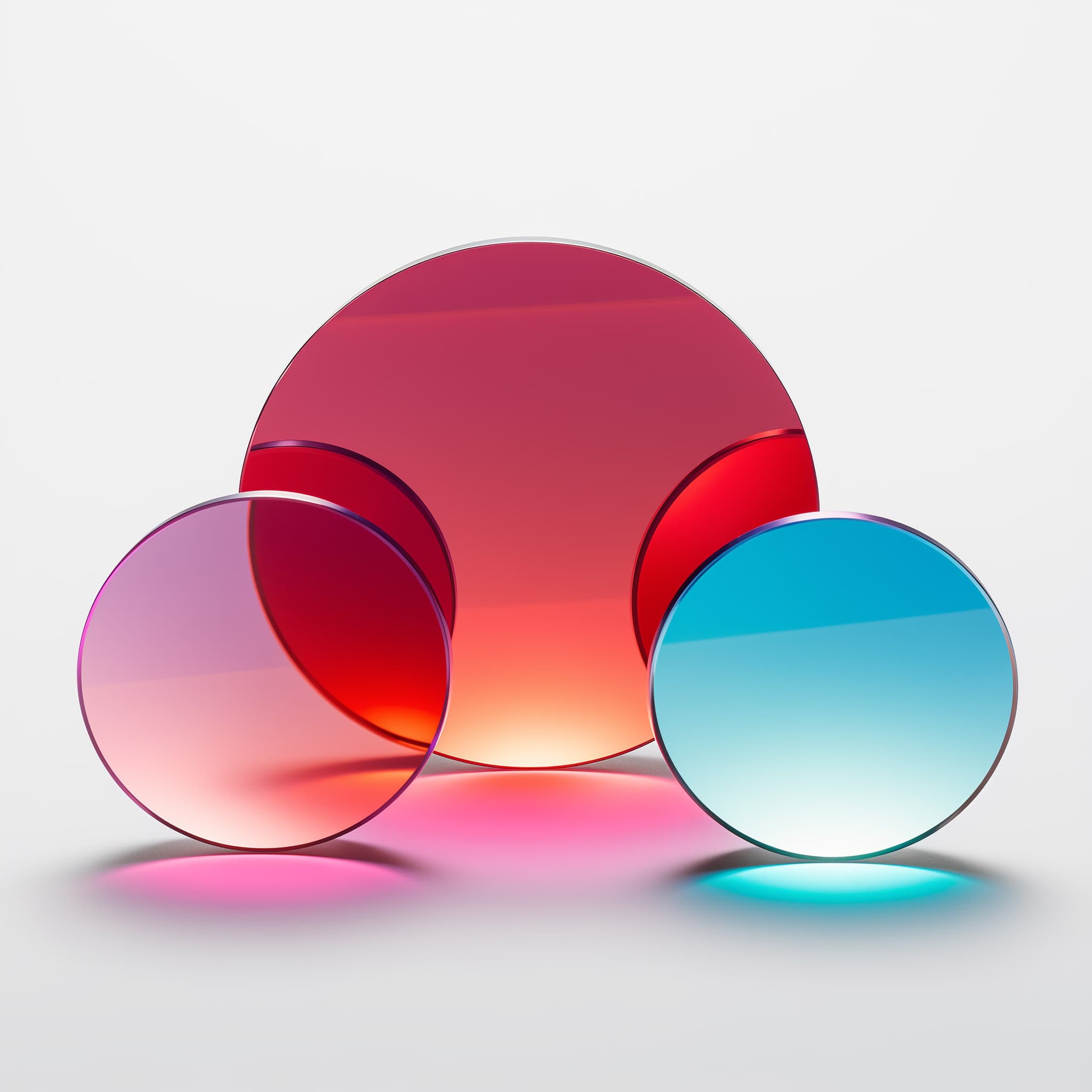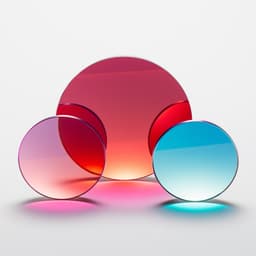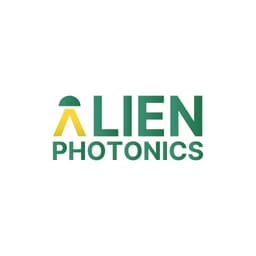


Output Couplers (Partial Reflectors)
Output Coupler is multipurpose optical component - output cavity mirror or and partially reflective mirror. Choose split ratio and tolerance - precision (IBS or MS coating) or standard (E-beam, IAD coating).
Estimated Shipping Date: January 27, 2026 - February 10, 2026
* - Shopping cart pricing is based on the most recent pricing and it is NOT ORDERING, but requesting an official quotation which should typically reach You within 1-2 business days.
- Description
- Characteristics
- Types
- Aberrations
How output couplers influence laser properties? Pump threshold, effciency, stability, etc.
Controlling threshold pump power using Output Couplers
Threshold pump power is a minimum amount of energy required to start the lasing process. You can use Alien Photonics output couplers to control it by choosing the required amount of light to transmit or reflect back to cavity. Higer reflection of output coupler (less light is lost) means lower threshold pump power (it is easier to start lasing).
Increasing and decreasing output power using Output Couplers
Overall efficiency (ratio of output power to pump power) is impacted by output couplers reflection and transmission values. Alien Photonics recommends to carefully choose the reflection, because if reflectivity is too high – it will reduce the output power.
Increasing laser stability with Output Couplers
Changes in environment or within the laser system (e.g. temperature fluctuations) can impact output couplers and thus the laser performance. During the design stage at Alien Photonics, we carefully choose geometry, substrate and coating materials to ensure the stability of output couplers under various conditions.
Characteristics of custom output coupelers (partial reflectors)
| Characteristic | Typical available values |
|---|---|
| Wavelength range | from UV (~180 nm) to IR (~12 000 nm) |
| Sizes | from millimeters to hundreds of millimeters |
| Various splitting combinations | (Reflection vs. Transmission; R/T): 5/95; 10/90; 15/85; 20/80; 25/75; 30/70; 35/65; 40/60; 45/55; 50/50; 55/45; 60/40; 65/35; 70/30; 75/25; 80/20; 85/15; 90/10; 95/5, and other combinations are also available. |
| Shapes | Round, rectangular, custom shapes. |
| Surface form | Flat (Plano, high or standard parallelism), wedge, curved (plano-concave, plano-convex, aspherical). |
Curved or flat output coupler? How different geometry affects assembling and performance ?
Comparison of various geometries of output couplers
| Properties | Flat (Plano-Plano) | Concave (Concave-Plano) | Convex (Convex-Plano) |
|---|---|---|---|
| Stability | 4 | 5 | 2 |
| Ease of alignment | 5 | 3 | 1 |
| Ultrafast pulse compatibility | Possible, requires additional components | Suitable | Possible in very complex designs only |
| Thermal stability | Stable | Can be affected by thermal lensing | Can be affected by thermal lensing |
| Alien Photonics overall rating | 4 | 5 | 1 |
Plano-Plano (Flat) output coupler
Flat output couplers are quite convenient and popular, since it outputs collimated beam. This shape might require precise alignment to prevent high beam divergence, so Alien Photonics recommends this type where complex mode control is not critical. You can start building your output coupler from standard substrates and infrared substrates.
Plano-Concave output coupler
Curvature of the concave output coupler causes spatial filtering of the laser beam in the cavity. This filtering leads to stabilization of laser modes - favouring TEM₀₀ mode and reducing higher-level mode presence. This favoritism contributes to producing laser beam with lower divergence and higher spatial coherence. On top of that – overall stability is also increased in configurations designed to support stable single-mode operation. Alien Photonics recommends this shape for precision tasks. You can choose from Spherical plano-concave, cylindrical plano-concave and negative meniscus substrates.
Plano-Convex output coupler
Convex output couplers are way less popular in laser cavity design. However, this shape helps to support broader range of modes, which is a strong advantage in applications, where mode diversity is beneficial (e.g. mode-locked ultrafast lasers, broadband light sources, etc.) and in experimental research setups. Convex shape has some drawbacks including increased divergence (comparing to flat and concave output couplers) and implementation in the optical system itself, because this specific geometry requires precision alignment and additional optical components might be necessary to ensure efficient performance. Alien Photonics suggest to carefully consider whether the benefits of convex geometry outweigh the challenges in design and operation of your laser. As a base for partial reflector you can choose from spherical plano-convex, cylindrical plano-convex and even positive meniscus lenses.
How to avoid back (side) reflection of Output Coupler? Coated and wedged Output Couplers.
Two most popular methods to avoid backreflection:
-
Anti-reflective coating on backside (exit) or
-
Use wedged substrate.
Although both methods are widely adopted, the method with AR coating would still allow some backreflection.
Anti-reflection coating on exit surface
Most common solution is to apply anti-reflective (AR) coating. Alien Photonics offers various optical coating technologies, and for best (precision) result we suggest IBS or MS coating, however EBE is also quite often used and it is less expensive. However, if substrate has high parallelism characteristic, even with anti-reflection (AR) coating there still will be some interference.
Wedged Output Coupler to avoid back reflection (interference)
Wedged (few degrees) geometry will help to remove interference by slightly changing the reflected beam direction from incident beam. Although this option is not perfect and Alien Photonics suggest you to consider price of wedged substrate and the alignment challenges during the laser assembly process.